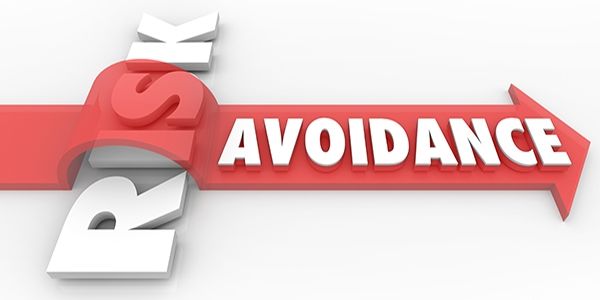Avoid Communication Risks by Honing Razor-Sharp Communication Skills
Make no mistake about it, projects, like personal relationships succeed and fail according to the degree of effective communication.
The adept Project Manager is able to navigate around communication risks by utilizing communication as a tool to forge long lasting, positive working relationships and leveraging them to execute and deliver successful projects.
So, what are the secret ingredients to these razor-sharp communication skills?
They are …
- Knowing your audience and connecting with them.
- Remaining politically astute
- Establishing your communication vehicle
- Timing and Anticipation
- Keeping Leadership engaged and involved
- Managing through a “Communicate, tell, roundtable” method.
- Practicing your delivery.
- Ending Positively.
The Project Manager must have the ability to accurately, astutely and concisely convey project information and details to stakeholders, resources, vendors and third parties. Think of the care and precision with which a mother bird gathers and deposits an exact amount of food into each baby’s hungry mouth. It is with this care precision and accuracy that we as project managers must gather, integrate and disseminate information to our teams.
Here are eight great ways!
1. Know your audience
All project communication should be laser focused to an individual audience, which could be one or multiple people. What inspires and motivates one may offend another. At project inception It’s a good idea to meet one-on -one with each team member to assess their comfort level with different communication vehicles. Experience has proven that individuals are extremely receptive to this dialogue and quite frankly surprised when PM’s take the time to go to such lengths. Up front planning in this respect establishes rapport and a path for effective, respectful dialogue, and eliminates risks and guesswork that would otherwise exist.
2. Be politically astute
The politically astute project manager utilizes effective communication to establish trust and authority as well as to motivate, influence and control.
Political effectiveness begins with knowing key project stakeholders and their goals and motivations. Who’s for and against you . . . who needs the project to succeed and who may want it to fail? Also remember that people respond to and are motivated by positivity. Ask for suggestions, insight and assistance to solving an issue rather than leading with, “there is a problem.” This approach will greatly mitigate risks associated with interpersonal project issues.
[widget id=”custom_html-68″]
3. Establish your communication vehicle
Oftentimes, the communication vehicle chosen is as important as the message. Face to face interactions are preferred for those that value “extras” such as body language, the subtleties of facial expression, etc. Some individuals prefer to work strictly with E-mail messages. Once you’ve determined which vehicles are most appropriate, outline these in your communication Plan.
4. Timing & Anticipation
The unfortunate rule of timing is that “it depends,” but the general rule of thumb is to communicate sooner. Projects occur at a fast and furious rate, and keeping communication relevant and timely is paramount.
The ability to anticipate “next moves” and responses is an acquired skill. Consider your audience’s reaction to your communication and how this may shift the climate. Projects are often like chess matches; in this respect and knowing your “next move” is not only prudent, but required, and an excellent risk avoidance technique.
5. Keep senior leadership engaged and involved
If your project has senior management’s attention, it’s your job to keep it. Neglecting to do so could be hazardous to your project’s health, as well as introduce support and momentum Risk. Remember to provide updates as to business viability, alignment with relevant strategic objectives, key issues and risks. Also, while senior leadership should have access to project details, their concern and appetite is generally reserved for higher-level detail and information.
6. Communicate, tell, roundtable
For all meetings, have a specific agenda that outlines what the team will accomplish during the call or meeting. Communicate the topics that will be covered and the overall goal of the meeting. This conveys preparation to lead dictates purpose and direction and provides the opportunity for team members to speak up if there’s a topical question or additional clarification needed.
Now, cover each point and document all feedback. At meeting close, summarize key points . . . tell them what you told them. Hold a “round-table” check-out where each team member has a final opportunity to provide feedback, ask questions, air complaints, etc. This is an informal way of making sure you have feedback and participation from all team members.
Post an immediate communication summary of each point discussed, key decisions reached, action items, owners, due dates and overall project team next steps. Key decisions are an important item and may later be used to justify a particular course of action. This can’t miss approach provides a timely and relevant chronological retrospective and mitigates communication risks.
7. Practice delivery
Consider attending toastmasters or offer to speak at a local chapter meeting on a topic you’re familiar with. This will further hone your communication and delivery skills. You’ll not be familiar with everyone in the room, which will bolster additional self-confidence when you nail the delivery.
8. End Positively
Effective communicators are adept at massaging information. Just as a magician produces doves from a hat, the project manager can spin a negative message into something powerful and inspirational.
Remember to highlight individual and team accomplishments as well as recognize resource contributions … not necessarily just those that go above and beyond. This will provide the team with hope and a sustained sense of accomplishment. The goal of the project manager is maintain positive momentum while reinforcing the projects goals and viability.
Make a point to end meetings and communications enthusiastically and on a positive up-swing. Remembering that teams feed off the energy and drive of the project manager and utilizing the ingredients will greatly reduce communication risks and allow you teams to benefit from your well-directed and razor- sharp communications!




